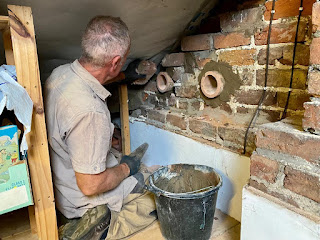New initiative criticised as ‘indiscriminate’
A voluntary commitment to instal newly built homes with bird-nesting bricks or boxes as well as creating hedgehog highways will go live through the planning system from September.
More than 20 developers, building over 90,000 homes a year, are offering 300,000 nesting places to support dwindling swift numbers as part of a Homes for Nature initiative.
Action for Swifts chief executive Becky Ingham said: “For centuries swifts have shared our buildings and homes by nesting in the nooks and crannies’ of old-style buildings. In recent years the loss of nesting sites has had a major detrimental effect on this red-listed species.”
Swift numbers have dropped by 60 per cent between 1995 and 2020 according to the British Trust for Ornithology while hedgehog populations are believed to have declined by up to 70 per cent.
“It’s heartening to now see the commitment from so many major developers towards installing integral bricks, which will last the lifetime of the building and provide our swifts and other cavity -nesting birds with long-term habitat,” he added.
The developers have also pledged to create access points through gardens and open spaces of new developments to help hedgehogs find food, safety and fellow mates. Sustainable urban drainage systems and pollinator-friendly landscaping are also being promoted.
Large developers such as Barratt Developments, Crest Nicholson and Taylor Wimpey have signed up for the scheme as well as smaller ones like Deanfield Homes, Durkan Homes and Thakenham.
Homes for Nature is encouraging builders to create extra features such as bat roosts, insect bricks and underground chambers, and hibernaculums, to protect frogs, snakes and lizards from the cold. Sustainable urban drainage systems and pollinator-friendly landscaping are also being promoted.
The 21 housebuilders have agreed to participate in annual reporting of progress and reviews for the next five years. Homes for Nature was developed by an onsite nature measures working group of housebuilders who are also part of the Future Homes task force to deliver net zero targets.
Associate environmental sustainability director for Miller Homes and working group chair Jo Stott said: “The commitment highlights the vital role housebuilders can play in creating sustainable, nature-friendly spaces. Often seen as part of the problem, housebuilders can be the driving force behind solutions that make a real impact.”
New initiative criticised as ‘indiscriminate’
But the National Federation of Builders, NFB, said the initiative undermined attempts to incorporate such features in the regulations for biodiversity net gain which would have helped SMEs.
NFB policy and market insight head Rico Wojtulewicz said: “We should be targeting biodiversity not creating indiscriminate habits. It should be targeted according to the locality.”
He added that “some local authorities had already written tailor-made policies to support biodiversity according to the wildlife profile of the area”.
Mr Wojtulewicz said if such an approach was done nationally then it would ensure “we mapped, tracked and supported regional and national biodiversity”.
Earlier this year new regulations came into force requiring new housing developments to deliver a ten per cent rise in biodiversity.
The new rules have proved costly for builders of smaller developments who have often had to buy off-site credits, and additional land elsewhere, to achieve the ten per cent enhancement of wildlife.
Brokers Hank Zarihs Associates said that development finance lenders wanted to see solutions such as bird bricks included in the biodiversity metric as this would make the development of small sites more viable.

